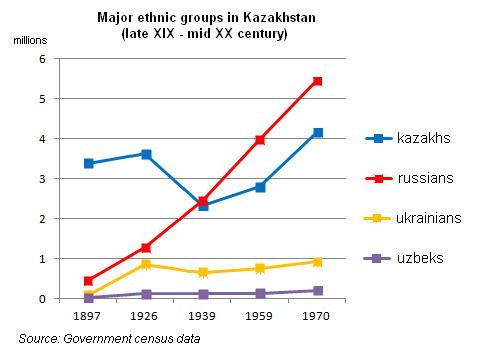 | ||
The Kazakhstan famine of 1932–1933, described as Kazakh catastrophe by Robert Conquest, was part of the Soviet famine of 1932–33. While Ukraine was worst affected, the famine also spread to the Russian Soviet Federative Socialist Republic's autonomous republic, Kazakhstan and other areas. Kazakhs were most severely affected by the Soviet famine in terms of percentage of people who died (approximately 38%). Around 1.5 million (or possibly as many as 2.0–2.3 million) people died in Kazakhstan of whom 1.3 million were ethnic Kazakhs.
It is known in Kazakshan as "Goloshchekin genocide" (Kazakh: Голощекиндік геноцид), in reference to Filipp Goloshchyokin, who carried out the Sovietization of Kazakhstan at the time.
Taking into an account the Kazakh famine of 1919–1922, in 10–15 years Kazakh lands lost more than half of its population due to the actions of the Soviet power.
Consequences
The famine made Kazakhs a minority in their own republic, and not until the 1990s did Kazakhs become the largest group in Kazakhstan again. Before the famine, around 60% of the republic's population were Kazakhs, but after the famine, only around 38% of the population were Kazakhs.
